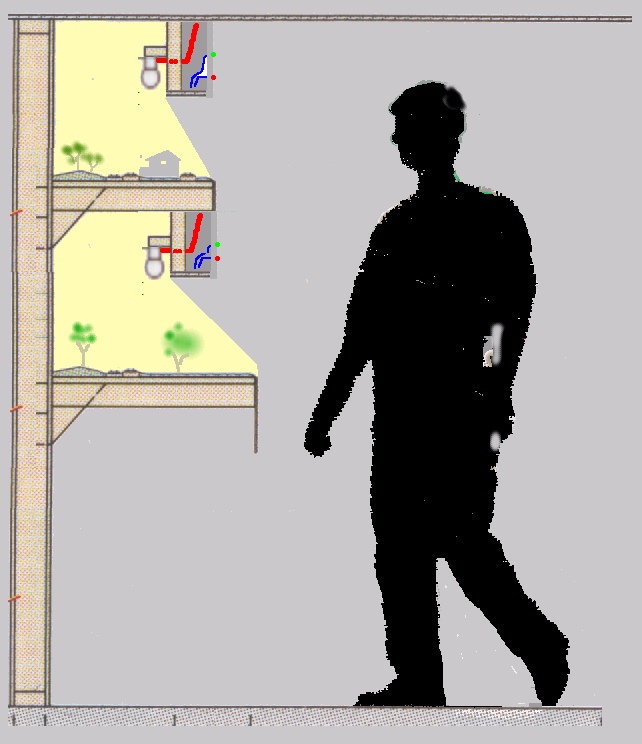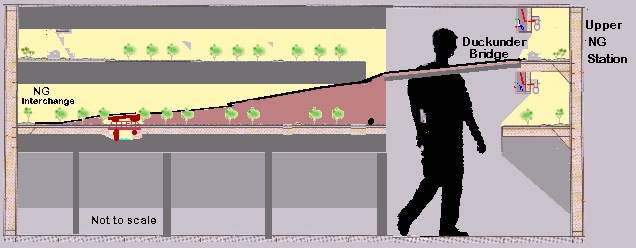Stations
- Main interchange station - where locos can be swapped ( loco depot ), island platform plus bay platform for intensive passenger use plus a modest yard to change locomotives.
- intermediate station that is normally switched out, ie may need mainline for shunting.
- medium station to allow passing of train through the station as well as shunting that does not foul the mainline.
- junction station to interchange with a branch.
- the branch will have shorter trains, and tighter curves. It may have a passing station on it, or just a silo loop.
- Narrow gauge interchange at a station with a line running to either a terminus or staging.
- at the moment I am thinking of having a mining interchange yard at one station where a private company meets the mainline. Locos would be exchanged brakevan exchanged etc I could have steam on this line even with Diesels on the mainline. Depending on the era I could have this, or modernise the branch with train entering or leaving the branch non stop. Sort of like the many coal branches in NSW joining the mainline.
Staging
I would have a 5 track reverse loop staging yard at each end of the line, with three single ended sidings for XPT/railcars. The upper staging most likely hang off the ceiling in the rear room ( because of that extra height I can use that space )
One train in, one train out at any one time. Operationally I would not be running a train non stop through here which should improve wiring.
Also ideally I do want the staging to be accessible. That is why one idea is to have the staging under the stairs for the lower level and the upper staging near the roof ( with easy access panels) - both locations not under scenery and not truly ‘hidden' trackage.
 Curves
Curves
Reverse curves should have 4 inch straight track in between.
Branchline may get down to 28 inch minimum with 30 inch normal
Heights
This it critical as I am having two decks, but the roof is not too high forcing the lower deck as low as I dare, but at one end I cannot go any lower than a concrete block at the front of the house.
They need to be at least 16 inches apart "I think". The upper level will allow the staging in the next room to be easier to go into as the heigh will be there already. Even so I see the staging line rising out of the modelled area for a while.
From a height perspective -the narrow gauge has recenly had an inspiration from a respected member of a group I attend. The idea is the narrow gauge can rise from the lower level interchange station across the asle at a higer level terminating on the upper level.

This was a good idea as I had orginally had a duckunder on the lower level.
The duckunder was to be hinged for use only when someone insisted to use the NG).
But now the duckunder may be higher - still hinged but now making
it easier to pass during operating. The NG line would be steep up, but in
theory the heavy loads are all "Down Hill". And being NG I will not be expecting
two foot train - 1.4ft okay !!!
It also has a good side effect in crossing to a area I had spare that
was a waste of space. Now it can be a mine, or upper station !
Industries.
There will be the usual small industries at various stations with
at least two grain silos on the layout. I hope to have a mine on a short
branch. At the moment I have not thought about the destination of the produces
of the industries, and what "one layout" movement may be (ie from one modelled
station to another without going into staging)
Have to ensure there is enough industrial space to make up trains
etc - ie the industries can generate often more than one wagon requirements.
Also do not wish to duplicate too many industries so I can have a lot of
variation in loads.
Points
I hope that most points will be made over time, with only a few commercial
examples. This is one activity I can do now and stockpile them( while waiting
for the room to be organised etc.).
There will be a lot of points on this railway ! I do not I can motorise
every point. So general yard points would be manually operated. Mainline
points or points giving access to the mainline would be motorised. Hidden
or unreachable points should be motorised.
We are thinking of making a servo motor point motor out of salvaged
5.25 & 3.5 Floppy Disk Drives. The idea they can be set to go across at different
speeds, or different travel distances.